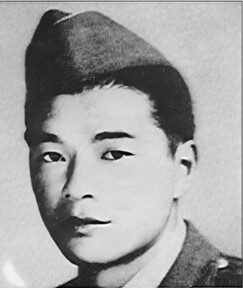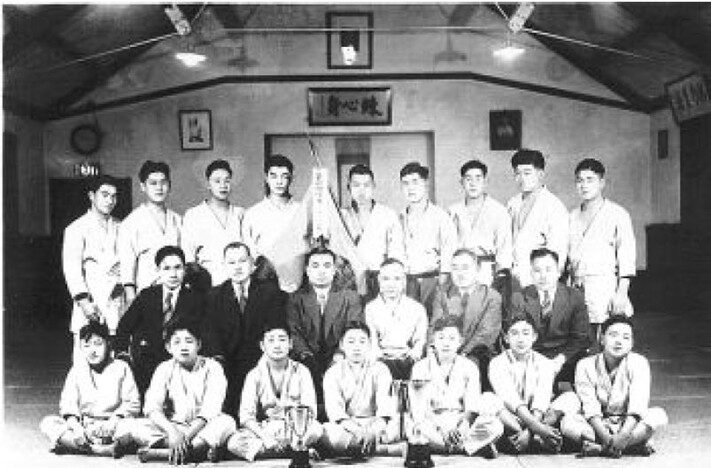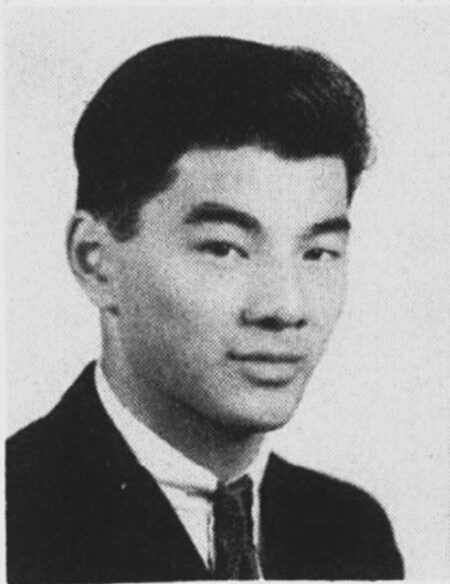Soldier Story: Yasuo Peter Fujino
Soldier Story

Yasuo Peter Fujino
Private First Class
442nd Regimental Combat Team
3rd Battalion, L Company
Yasuo Peter Fujino was born in Seattle, Washington, on December 24, 1922, to Takesaburo and Suma Fujino. Takesaburo and Suma (Fujino) were born in the village of Inae, Shiga Prefecture, Japan. They married on July 6, 1906, and emigrated to Washington, arriving on August 22, 1912, on the Panama Maru. They lived in Auburn and worked as farm laborers until moving to Seattle about 1918. Yasuo’s siblings were: brothers Yonezo, Haruo, and Shigenobu; and sisters Hideko, Akiko, and Mitsuko. Yonezo was born in Japan and arrived in Seattle in 1915.
Peter grew up in Seattle where his family owned and operated the Waldon Hotel at 605 Yesler Way. He attended Broadway High School where he was considered an outstanding athlete, earning two letters in football and one in track and earning an all-city honorable mention. He also played for the Marmots, a Nisei team in the 160-pound league of the semi-pro Greater Northwest Football League. Peter played basketball with the Cavaliers and he earned a black belt in judo at Seattle Dojo.

1940, Seattle Dojo, Peter is top row, fourth from the left

1941, Peter Fujino , 1941 senior class yearbook
Pete, as he was known, spent the summers of his high school years as a cannery worker for the New England Fish Company in Alaska. After graduating from Broadway High School in 1941, he worked as a station porter for Northern Pacific Railways. He was attending Edison Vocational School in Seattle when Pearl Harbor was attacked on December 7, 1941.
In the spring of 1942, the Fujino siblings and their mother were evacuated to the Puyallup WCCA Assembly Center located on the Washington State fairgrounds, euphemistically called “Camp Harmony” by those incarcerated there. Father Takesaburo, however, was immediately incarcerated that spring at the WRA Detention Center in Santa Fe, New Mexico.
While at Puyallup WCCA, Pete Fujino signed his draft registration card for Local Board No. 1 on June 30, 1942. He lived in Unit 8-2-18 with this family. His mother was his point of contact. Pete was 5’10-½” tall and weighed 170 pounds.
A few months later, the family at Puyallup WCCA were incarcerated at the Minidoka WRA Camp – Pete’s mother and sisters arrived on September 4, 1942, and Pete ten days later on the 14th. They lived in Unit 7-C. Father Takesaburo did not arrive at Minidoka from Santa Fe until February 21, 1944.
Peter volunteered for the 442nd Regimental Combat Team while incarcerated at the Minidoka WRA camp in Idaho. He traveled with a group of 30 volunteers released from Minidoka on May 22, 1943, to Fort Douglas, near Salt Lake City, Utah, and was enlisted in the U.S. Army on June 12, 1943. His civilian occupation was listed as “Semiskilled chauffeur/driver, bus, taxi, truck, trailer.” Pete was sent to the 442nd RCT at Camp Shelby, Mississippi, where he was assigned to 3rd Battalion, L Company, 2nd Platoon. After a year of basic, combat, and specialized training and field maneuvers, Pete Fujino left with the Combat Team on April 22, 1944, for Camp Patrick Henry, Virginia. They sailed from nearby Hampton Roads on May 2, arriving at Naples, Italy, on May 28.
The 442nd was in a bivouac area in nearby Bagnoli until June 6 when they boarded LSTs for the overnight voyage to the Anzio beachhead. On June 9, they were trucked through the recently liberated city of Rome, to a large bivouac area in Civitavecchia, about 50 miles north of the capital city.
Peter served in the Rome-Arno Campaign, entering combat with the 442nd on June 26, 1944, near Suvereto, north of Rome. During the push up the Italian peninsula over the next few weeks, they saw significant action in driving the enemy farther north. On July 20, three patrols were ordered to reconnoiter the area beyond the Arno River to gather information about the Germans. Pfc. Fujino volunteered for the L Company patrol, whose objective was to venture behind enemy lines and obtain information from an Italian partisan leader in Pisa. When his patrol did not return within the day – as the other two patrols had done – they were feared lost. They finally returned to camp at midday on July 22 with valuable information. They had spent much of the previous day hiding in the attic of a partisan’s house while a German patrol wandered around downstairs. As a result of their actions, each man received the Bronze Star Medal for their work. Fujino’s citation reads:
…Pfc. Fujino has been awarded the Bronze Star for participation in a daring 12-man reconnaissance patrol which after 2 days behind German lines south of Pisa, Italy, returned with complete information on enemy positions and minefields.
After nearly a month of combat, the 442nd was pulled off the lines on July 21 and sent to an Army rest area at Vada. While there, on August 2 a demolition demonstration on the latest anti-tank, anti-personnel, and German mines and booby traps was given by a squad from the 109th Engineers and it took place in the 442nd’s 3rd Battalion area. After the demonstration concluded, most of the battalion had dispersed when a crate of TNT exploded as it was being loaded onto a truck already containing mines of every size and description. It was dropped and the resulting blast killed nine men immediately, and one M Company soldier 100 yards away was hit by a piece of land mine and died. This was later recalled by Ken Higashi:
We were divided into several small groups throughout the large field...At the end of the class, we were dismissed to our company areas. We no sooner reached our company area when there was a huge explosion…In our second platoon area, Turk Suzuki and Pete Fujino had just crawled to the pup tent when a large piece of the truck’s sheet metal dropped just outside their tent!
Another L Company man, Masaharu Okumura, known as Masi or Oki, wrote about what happened three days later, on August 5:
The other bad thing was the accidental shooting of Pete Fujino, with Turk Suzuki lying right next to him, both reading letters from home. I was lying right in the very next row of that vineyard doing the same thing. Some guy was cleaning his rifle 50 yards away, got careless, and it went off and got Pete right in the head. Turk was shook up for a few weeks and nobody blamed him.
Pfc. Peter Fujino was buried in the U.S. Military Cemetery in Vada, Italy, Section D, Row 5, Number 346.
For his military service, Pfc. Yasuo Peter Fujino was awarded the following decorations: Bronze Star Medal with one oak leaf cluster, Purple Heart Medal, Good Conduct Medal, World War II Victory Medal, American Campaign Medal, European-African-Middle Eastern Campaign Medal with one bronze star, and Combat Infantryman Badge. He was posthumously awarded the Congressional Gold Medal on October 5, 2010, along with the other veterans of the 100th/442nd Regimental Combat Team. This is the highest Congressional Civilian Medal.
After the war, the US began closing most of the overseas wartime cemeteries. Families were given the option of having their loved one return to the US or reburial in one of the few remaining post-war cemeteries overseas. The Fujino family chose to have Peter brought home. He was returned to Seattle and buried on June 25, 1949, at Evergreen Washelli Cemetery in Seattle, following a memorial service at the Seattle Buddhist temple. Pallbearers were Masakatsu Tsuchikawa, Joe Nakatsu, Nobuichi Fujita, Henry Obata, Ken Higashi, Masao Watanabe, Keiji Sato, and Pete Kozu. He was survived by his parents, brothers Haruo and Shigenobu, and sisters Hideko Tamishita, Mitsuko Sakamoto, and Aki Fujino. His brother Yonezo apparently had returned to Japan as no further information was found on him.
Peter’s father, Takesaburo Fujino, became a naturalized US citizen on November 30, 1953, in Seattle.
Researched and written by the Sons & Daughters of the 442nd RCT in 2023 and updated in 2025.